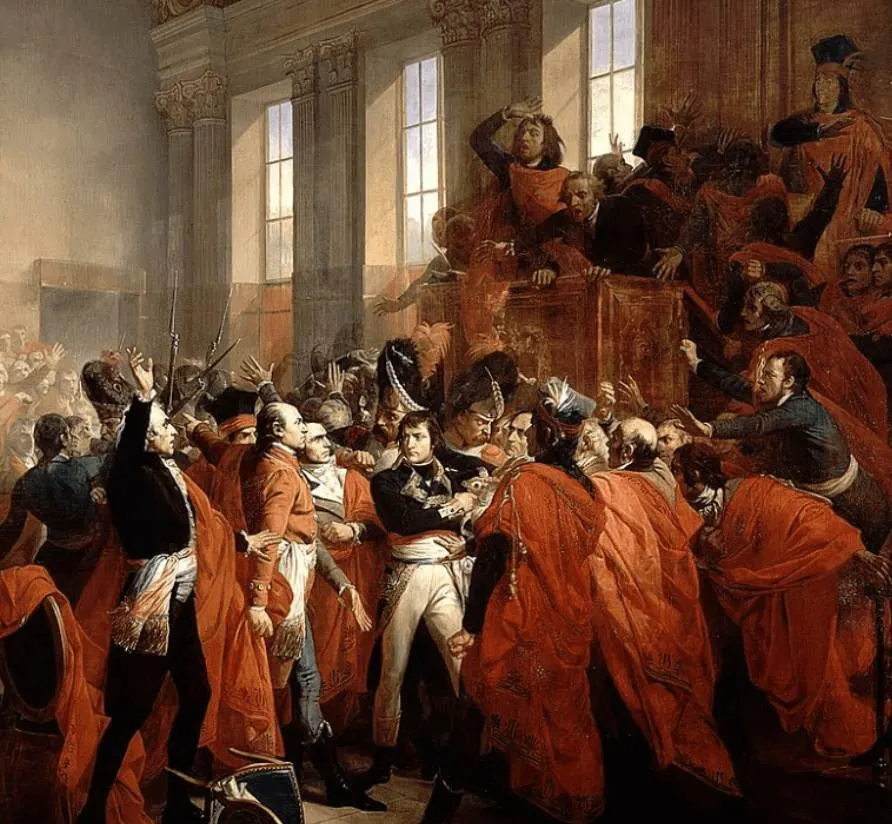It’s one of the most significant periods in modern history which started the decline of absolute monarchies all around the world. Lasting over a decade, it had profound consequences for the values we consider to be normal today.
The most important aspect is the fact that the values that the revolutionaries fought for weren’t merely national but aimed at helping humanity as a whole. Emancipation of the individual, honest division of land, removing benefits at birth for the nobility, and the establishment of equality to name a few.
In this post, we will present you with a complete picture of what happened, and present you with the ultimate list of facts about the French Revolution.
Related: Check out some of the most important people of the French Revolution.
1. The rise of the public Sphere
Starting in the 18th century, the passive side that the commoners had in society for centuries started to become active. The one-sided society gradually turned into a society in which regular people had a voice as well and open discussions about important issues outside of the control of the state became possible.
This was in great contrast with society in the 17th century under the reign of Louis XIV (the Sun King), the absolute monarchy had absolute power. The “representational culture” that existed was mostly emphasized by the grandiose Palace of Versailles, which had the sole purpose to overwhelm its visitors.
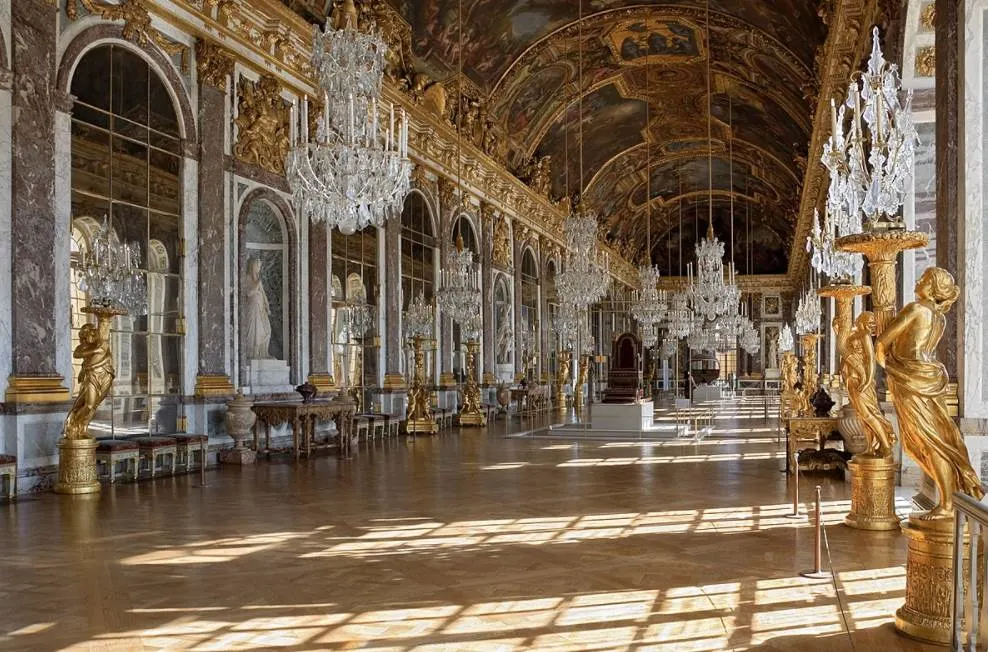
2. By the 1780s the monarchy had lost all its power
In the 17th century, the monarchy was the one that decided what was culturally good and not. By the 1750s, during the “Querelles des Bouffons,” a discussion about the quality of French and Italian music, the question was openly posed to the French public. This was unthinkable during the reign of Louis XIV.
By the 1780s and during the crucial years before the revolution, the idea that the public had absolute power to answer cultural questions switched to the idea that it also had absolute power to answer political ones.
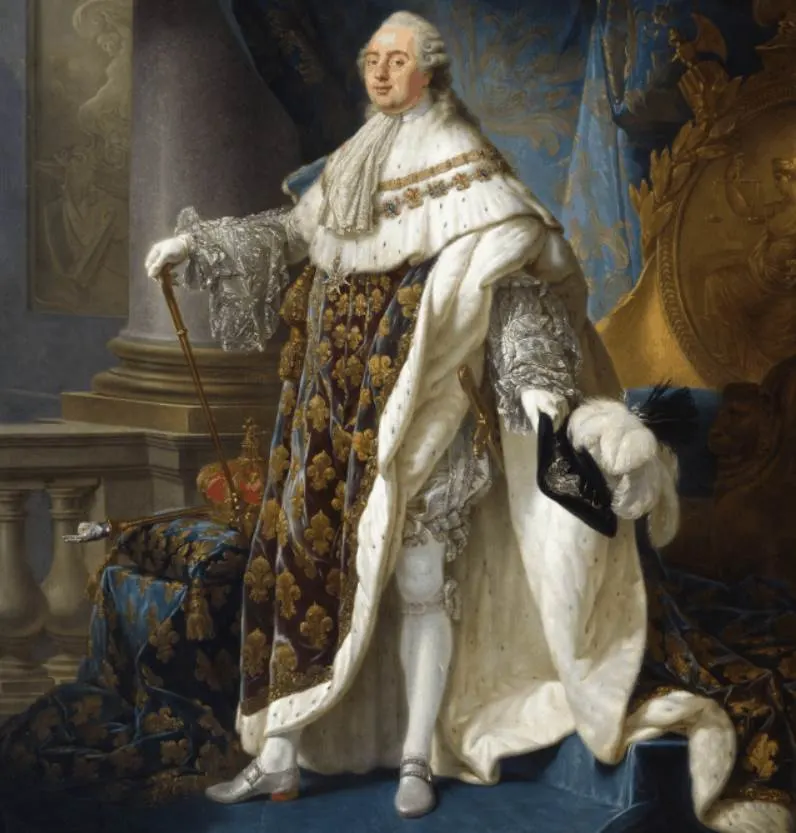
3. The monarchy was featured in dirty books
The moment Louis XVi and Marie Antoinette became the King and Queen of France on May 10, 1774, the nature of the publications became more graphic. These publications were called “Libelles” and were basically a massive illegal propaganda machine.

While the earlier Libelles mainly criticized individuals, they became more and more focused on criticizing the monarchy as a whole. Both King Louis XVI, who was depicted as a failed womanizer instead of a powerful king, and his wife Marie Antoinette, of whom numerous pornographic issues were published, were popular targets.
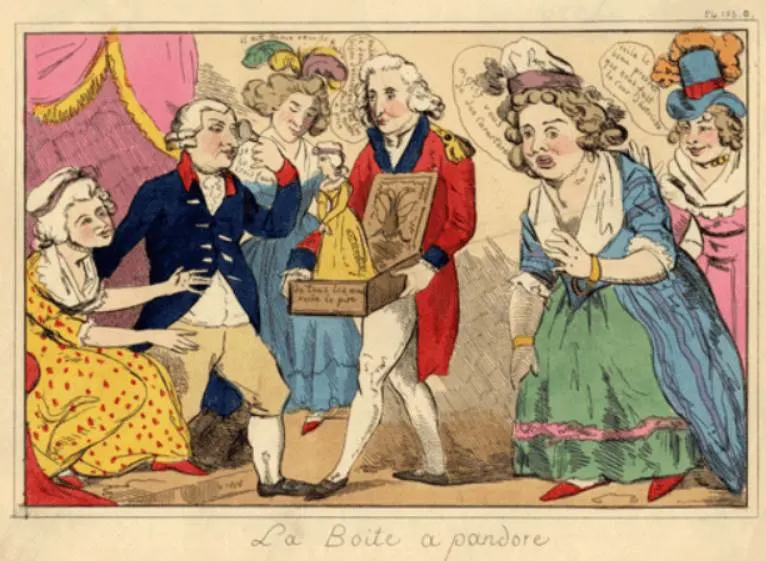
4. The state was completely bankrupt
There are several reasons that the state was completely bankrupt by the 1780s, but the most important ones were:
- The Seven Years’ War and the American Revolutionary War.
- Heavy spending by the royal family, mainly at the Palace of Versailles.
- An unjust tax system in which the nobility could claim immunity.
The outdated financial system of France at the time, which put the burden of the debt on the poor and middle class, wasn’t enough to solve the huge problems that were mounting.
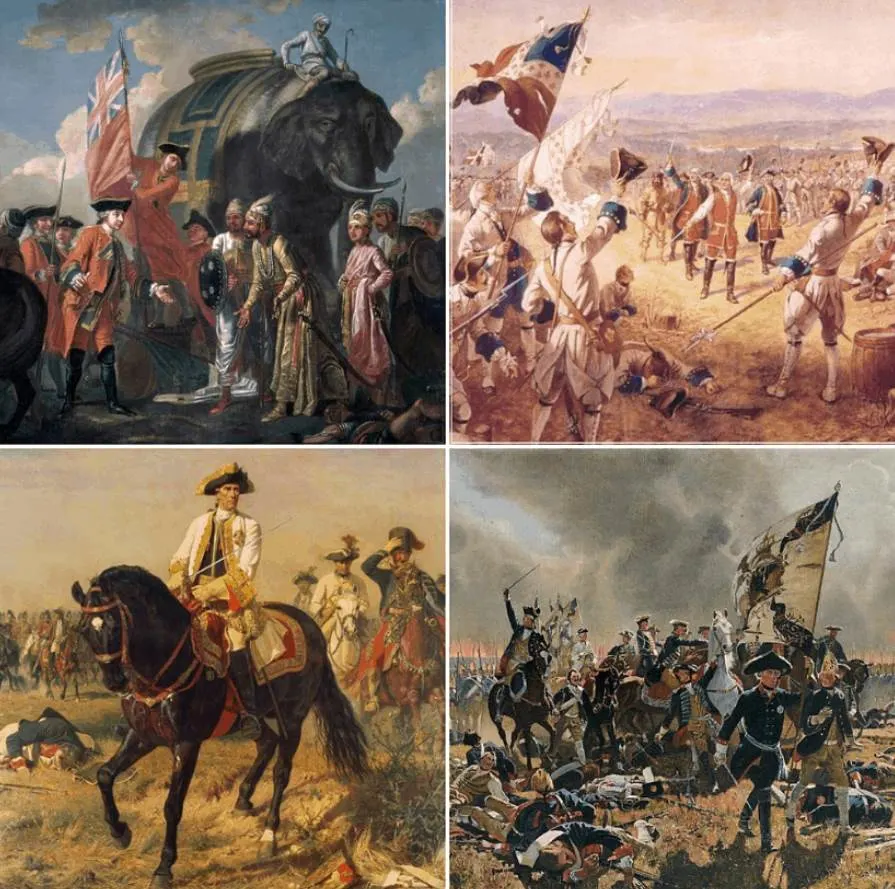
5. The debt was really huge
Historian John Shovlin makes it clear that the enormous debt amassed by the French State was a very important reason for the French Revolution. Without it, there wouldn’t have been a need to burden the Third Estate with increased taxes.
To put this in perspective, the debt under the reign of King Louis XVI had risen from about 8 billion livres (the currency back then) to 12 billion livres. The French backing the Americans in their revolutionary war alone added 1.3 billion livres to the national debt.
There were basically 3 groups of people:
- The First Estate – Clergy
- The Second Estate – Nobility
- The Third Estate – Commoners
The First and Second Estate were mostly exempted from carrying the burden of taxation, which resulted in growing resentment against the social structure by the Third Estate.
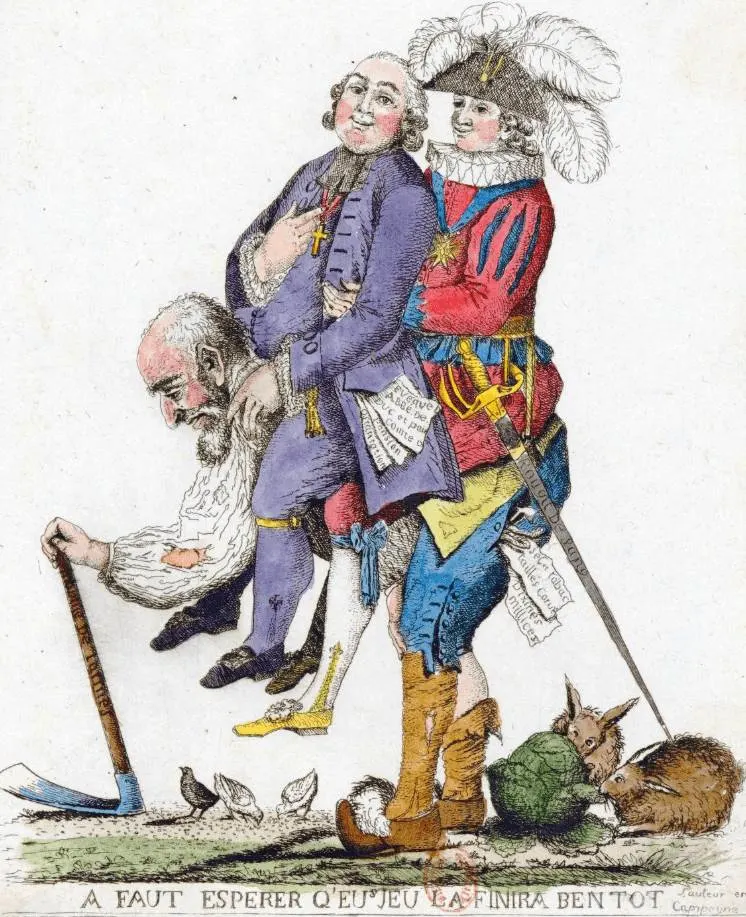
7. People were really starving
While the problem of hunger wasn’t a problem for the First and Second Estate, it was becoming increasingly worse for the Third Estate. This in combination with bad weather that caused poor harvests increased the problems of there not being enough food around for everybody.
In the years before the French Revolution began, the price of a loaf of bread was as much as the salary of an entire week!
8. People at Versailles didn’t know what was going on
Everything that the royal family did was a ceremony. This kept them busy the entire day, without ever leaving the compound of the immense Palace of Versailles.
This simply meant that they were living in a fantasy world without really knowing what it meant to starve to death because you can’t buy a loaf of bread.
They were simply living their life in a golden cage, literally!
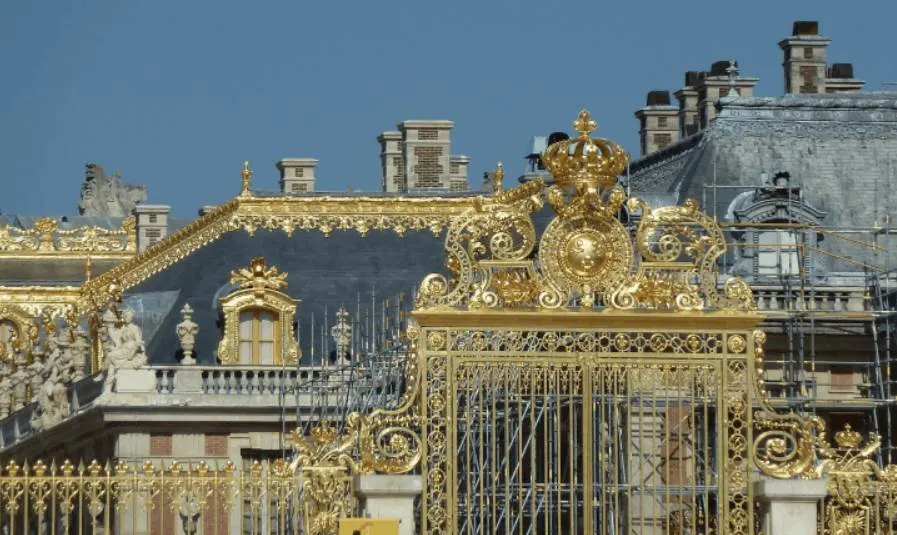
9. Marie Antoinette received a lot of hatred
Marie Antoinette wasn’t really popular amongst the Third Estate in France. She wasn’t just being accused of being an Austrian spy (she was Austrian after all) but was also hated for her behavior.
While the people in the streets of France were starving, she didn’t stop spending heavily. One of her most notorious projects was “Le Hameau de la Reine,” a farm that was built in 1783 on her private estate, “Le Petit Trianon.”
When completed, she dressed up as a peasant and pretended to be a farmer with her entourage. It’s logical to assume that this wasn’t appreciated by the people who couldn’t afford to buy food that day.
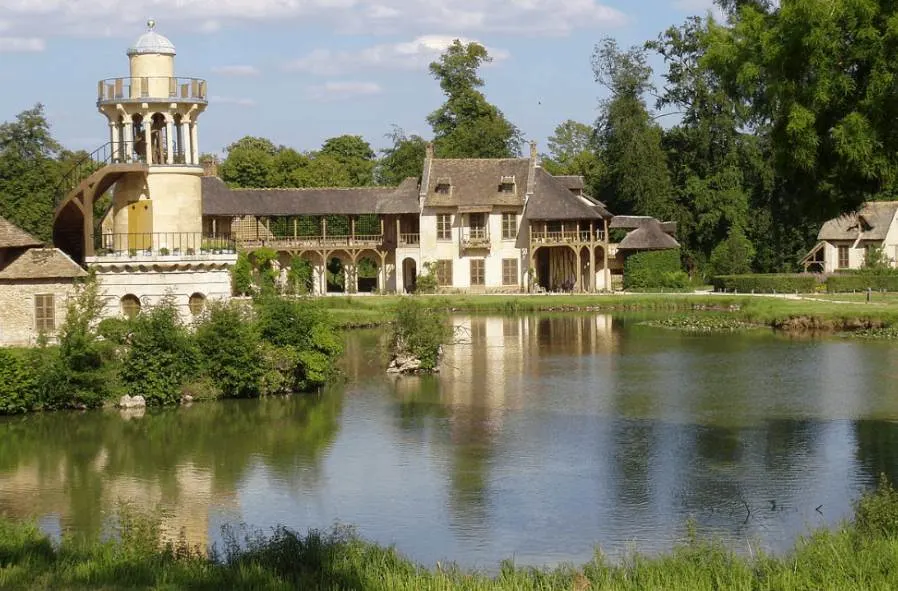
10. Many attempts to solve the financial problems failed
The first attempt to make a big change that could solve the financial crisis was made in 1776 by then ministers Turgot and Malesherbes. This wasn’t received well by the First and Second Estate and therefore blocked by the Parlement.
Both ministers were dismissed by King Louis XVI and Jacques Necker was assigned. his policy was to take on large international loans to solve the crisis. Needless to say that this policy failed too and he was dismissed shortly after.
Finally, Charles Alexandre de Calonne was appointed to try and rectify the situation and he suggested a consistent land tax that included the clergy and nobility. This was yet again blocked by the Parlement.
11. The Assembly of Notables didn’t do much good either
It became pretty obvious that the Parlement wasn’t eager to agree to tax changes for the First and Second Estate. That’s why Charles Alexandre de Calonne summoned the Assembly of Notables and handpicked the assembly himself to approve new taxes in 1987.
Even that didn’t work out, the tax reforms discussed at the Assembly were rejected because the clergy and nobility didn’t want to give in to higher taxes, and Calonne was forced to leave the country.
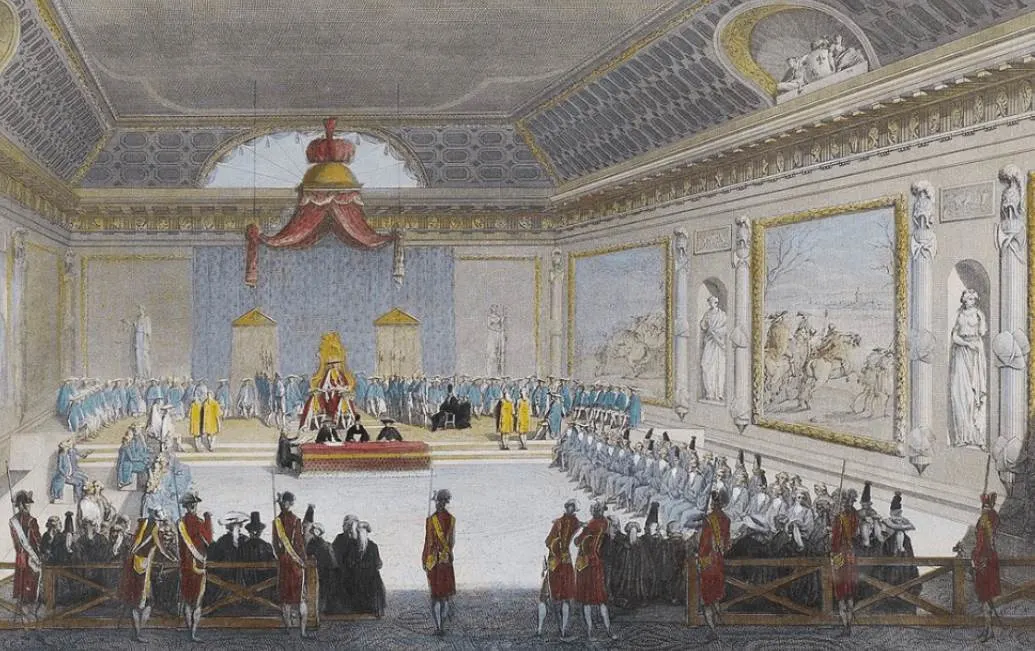
12. The King made a popular decision
With all the proposed tax reforms being rejected, and the Assembly of Notables amounting to nothing, there was only one thing left to do for King Louis XVI. In 1789, for the first time since 1614, he announced the calling of the Estates-General for May 1789.
This was a popular decision because at the Estates-General, all three Estates of the French society were included, meaning the Third Estate (the commoners), as well.
13. The Estates-General was a massive meeting
The 3 Estates were represented as follows:
- First Estate – 303 clergies representing 100,000 Catholic clergies.
- Second Estate – 291 nobles who represented about 400,000 people.
- Third Estate – 610 men representing about 95% of the population.
The Third Estate was mostly represented by lawyers and businessmen. many of them were well-educated officials.

14. Nothing radical was brewing just yet
When the Estates-General started on May 5, 1789, nothing radical was expected. Everybody assumed that the matter of taxes would be voted on, and an agreement would be met.
Most of the representatives actually supported the monarchial system, and apart from solving the issues at hand, a revolution wasn’t really on the mind of the people in the room.
15. A pamphlet changed the course of modern history
A pamphlet published by Emmanuel Joseph Sieyès, however, brought the main issue forward which caused the Estates-General to be transformed. It read:
“What is the Third Estate? Everything. What has it been until now in the political order? Nothing. What does it want to be? Something.”
The words on the pamphlet that would become the battlecry of the French Revolution
The text further states that the Third Estate constitutes a nation within itself and that there was no need for the “dead weight” of the First and Second Estate at all.
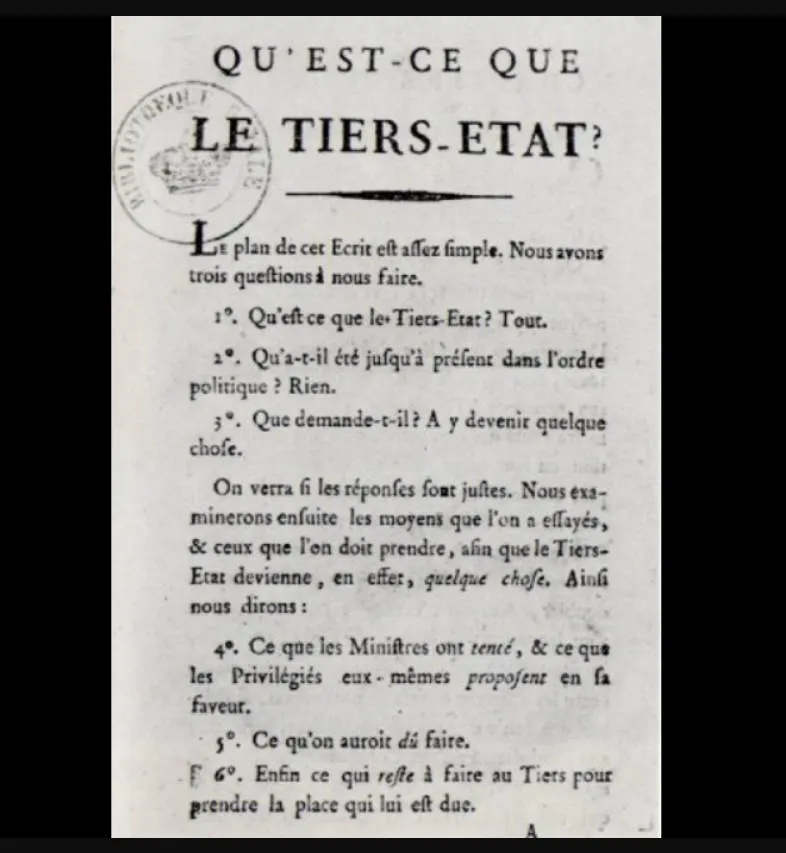
16. The situation deteriorated quickly
During the Estates-General, the King wanted to move toward the issue of taxes as quickly as possible. This was a serious misunderstanding of the situation as the Third Estate first wanted recognition.
The Third Estate negotiated with the other Estates to have the credentials of all delegates verified by members of all estates and not just by their own members. No agreement was reached and the Third Estate verified its members themselves.
17. The National Assembly was formed
On 10 June 1789, Abbé Sieyès, the writer of the crucial pamphlet, invited the other Estates to join them in the formation of the “National Assembly,” an assembly not of the Estates but of “the People.” The National Assembly was formed on June 17, 1789.
This was the radical idea that was needed to fuel the revolution. The people now formed a group that had the intention of running the country, outside of the outdated social structure that crippled them before.
18. Louis XVI made a crucial mistake
The issues of taxes hadn’t been resolved, and instead, the Estates-General became fight amongst the Estates themselves. In an attempt to prevent the recently formed National Assembly to gather, Louis XVI made a crucial mistake.
he locked down the Salle des États where the Assembly met, making an excuse that the carpenters needed to prepare the hall for a royal speech two days later.
Instead, the National Assembly met in a tennis court just outside of Versailles, and “they swore not to separate until they had given France a constitution.” This oath is known as the “Tennis Court Oath,” another crucial moment in the French Revolution.
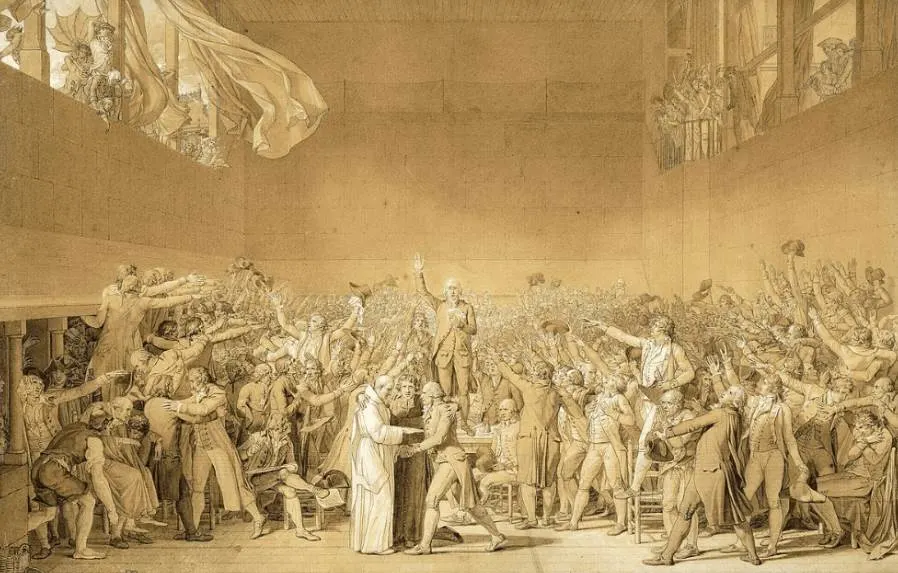
19. The National Assembly renamed itself
The National Assembly started to get a lot of support, not just from Paris, but from all over France. This awakened the notion that the National Assembly could actually run the country.
For this reason, it changed its name from National Assembly to National Constituent Assembly on 9 July and began to function as a governing body and a constitution-drafter.
20. King Louis XVI made yet another grave mistake
After Necker, the French minister of finance, published wrong information regarding the state’s debt and made it publicly available, he was fired and a completely new ministry of finance was created.
The problem was that Necker had won the sympathy of the Third Estate, which was now the National Constituent Assembly, and this act was judged as an act against the newly formed Assembly.
21. The French Revolution was launched
An act of treason against the Assembly. That was how the Parisians interpreted the firing of Jacques Necker. This was all made worse by the belief that royal troops were on their way to bring down the National Constituent Assembly.
The news reached Paris on July 12, 1789, and it was a young journalist named Camille Desmoulins who fired up the crowd to take up arms, just outside the Palais-Royal. Over 10,000 people had gathered there already when he spoke the words:
Citizens, there is no time to lose; the dismissal of Necker is the knell of a Saint Bartholomew for patriots! This very night all the Swiss and German battalions will leave the Champ de Mars to massacre us all; one resource is left; to take arms!'”
22. The Storming of the Bastille, A pivotal moment
One of the most important moments in the French Revolution happened on July 14, 1789. The riots that engulfed Paris were completely out of control, and the crowd had set their eyes on the large, ugly Bastille, a symbol of the monarchy’s power.
After all, they just stormed the Hôtel des Invalides and were able to acquire about 30,000 muskets. There was one problem though, there was no gunpowder as the 250 barrels it held were recently moved to the Bastille.
As negotiations dragged on since early morning, the Bastille was stormed by the crowd that turned into a violent mob in a split second at around 1:30 pm.

23. The tax cuts people wanted were finally there
On August 4 and 11, 1789, feudalism was officially abolished in France. This means that all farmers who used to pay taxes for their land didn’t have to do so anymore and they basically got the land they worked on for free.
The second important decision was that the “tithe,” a special form of tax involving 10% of everything, that was paid to the church was abolished as well.
24. Thomas Jefferson played a role as well
The leader of the National Guard, General Lafayette, had played a major part in the American Revolutionary Wars and had been able to talk to many of the founding fathers of the United States, including Thomas Jefferson.
It’s from these ideas that the “Declaration of Man and the Citizen” was published on August 26, 1789. This declaration didn’t really serve as a legally binding constitution but rather as a statement of principles.

25. The first constitution still offered some power to the King
The National Constituent Assembly now had the power to draft a new constitution, and the first change made was to replace the historic provinces with 83 départements.
One of the most interesting facts about the French Revolution is that even though Paris had been the scene of numerous riots and even witnessed massacres of people sympathetic to the monarchy, the King still had the power to veto certain laws that were drafted by the Assembly.
The main difference is that he could only delay the laws from becoming official, he didn’t have the absolute power he had before to stop them.
26. The financial problems didn’t go anywhere
While all this was going on, the elephant in the room was still there. The people were still hungry and the financial crisis was even worse than before.
While hungry, conspiracy theories that aristocrats deliberately made the people starve were easily believed. This culminated in yet another crucial event during the French Revolution, the “Women’s March on Versailles,” also referred to as the “October March.”

27. The Royal Family was forced back to Paris
Another reason for the Women’s march on Versailles was that they wanted the King to live amongst the people as a sign of good faith. At the same time, they demanded that the monarchy would stop blocking the National Assembly.
The King gave in to the demands of the angry mob, and on October 6, 1789, the entire Royal Family moved from the Palace of Versailles to the Tuileries Palace in the center of Paris under the protection of the National Guards, which subsequently legitimized the National Assembly.

28. Trying to flee wasn’t the best idea
Even though King Louis XVI didn’t like how things were going, he was even more reluctant to take any action that would show his support for forces that were against the Assembly.
That was exactly what happened though when he decided to flee Paris with his family in an event that was called the Flight to Varennes. It was called this way because it was in Varennes that they were recognized, arrested, and subsequently brought back to Paris.
After this event, the public opinion about the monarchy drastically changed and the radicalization of the revolution intensified. The National Guard also locked the Royal Family inside the Tuileries palace.

29. A treat came from abroad
The King’s wife, Marie Antoinette, was the sister of the Holy Roman Emperor, Leopold II of Austria. Together with King Frederick William II of Prussia, the King’s brother Charles-Philippe, and the Comte d’Artois, he issued the Declaration of Pillnitz, showing their support for King Louis XVI and against the revolution.
This was significant as it urged a lot of Assembly members to provoke a war with Austria and Prussia out of fear of an invasion of France.
And it happened, on April 20, 1792, France declared war on Austria, effectively starting the French Revolutionary Wars which would last a decade until 1802.
30. The Constitutional Monarchy Failed
The National Constituent Assembly was turned into the Legislative Assembly on October 1, 1791, and France became a Constitutional Monarchy. In this setup, the King would retain part of its powers such as having a veto right and the option to choose the ministers.
The Constitutional Monarchy failed and according to Martin Lyons, there were 6 core reasons:
- King Louis XVI did not accept the limitations on his powers and mobilized support from foreign monarchs to reverse it.
- The effort to overthrow the Roman Catholic Church, sell off its lands, close its monasteries and its charitable operations, and replace it with an unpopular makeshift system caused deep consternation among the pious and the peasants.
- The economy was badly hurt by the issuance of ever-increasing amounts of paper money, which caused more and more inflation. The rising prices hurt the urban poor who spent most of their income on food.
- The rural peasants demanded liberation from the heavy system of taxes and dues owed to local landowners.
- The working class of Paris and the other cities – the sans-culottes – resented the fact that the property owners and professionals had taken all the spoils of the Revolution.
- Foreign powers threatened to overthrow the Revolution, which responded with extremism and systematic violence in its own defense.
31. The Storming of the Tuileries Palace
All of the reasons mentioned above drove everything to a boiling point. Things exploded on the morning of August 10, 1792, when members of the Paris Commune and local militia stormed the place that the Royal family was staying in, the Tuileries Palace.
The Swiss Guards that were supposed to protect the King were killed. The King was able to hide with his family at the Assembly that was gathered in permanent session in Salle du Manège, opposite the Tuileries.
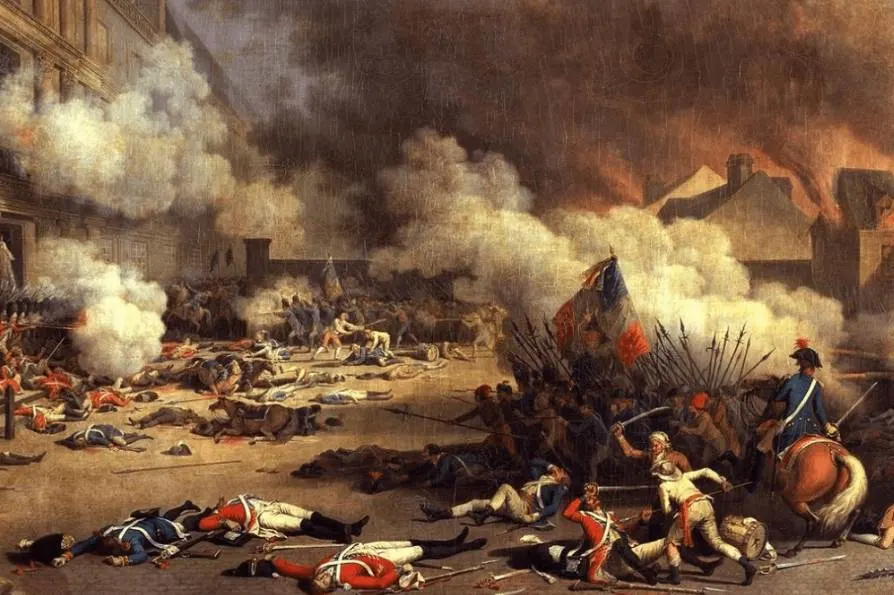
32. The chaos was complete and over 1,000 prisoners were killed
In a horrible event, between 1,000 and 1,500 prisoners that were being held in prisons in Paris were butchered because the mob believed there was a conspiracy with foreign powers.
The massacre took place on September 2 and 3 of 1792. The chaos and lawlessness in the Constitutional Monarchy were complete.
33. The National Convention replaced the Constitutional Monarchy
The Convention met on 20 September 1792 and became the new de facto government of France. The next day it abolished the Constitutional Monarchy.
September 22, 1792, was later retroactively considered to be the first day of the French Republican Calendar.
34. King Louis XVI was executed by guillotine
An event that shocked all of Europe, and especially monarchies, was the death sentence and execution of King Louis XVI of France.
On his trial, he was accused and sentenced because of his alleged “conspiracy against the public liberty and the general safety.” 361 voted to execute the king, 288 voted against, and another 72 voted to execute him subject to a variety of delaying conditions.
Louis XVI was executed on January 21, 1793, by guillotine on the Place de la Révolution, the former Place Louis XV, and now called the Place de la Concorde.
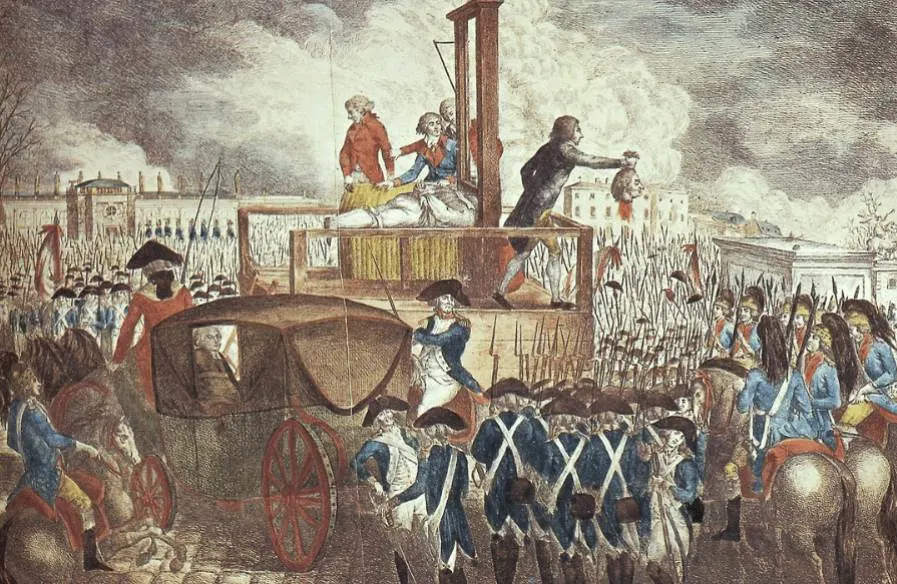
35. A lot more executions were to follow
the execution paved the way for a period of absolute terror, which is in return fittingly referred to as the “Reign of Terror.”
At least 16,594 people died under the guillotine or otherwise in the years 1793 and 1794 (including King Louis XVI’s wife Marie Antoinette) after accusations of counter-revolutionary activities. As many as 40,000 accused prisoners may have been summarily executed without trial or died awaiting trial.
Ironically, the main instigator of the Reign of Terror, Maximilien Robespierre, was publicly guillotined himself on July 27, 1794. That’s what you get when you send nearly 17,000 people off to lose their heads without the right to a fair trial.
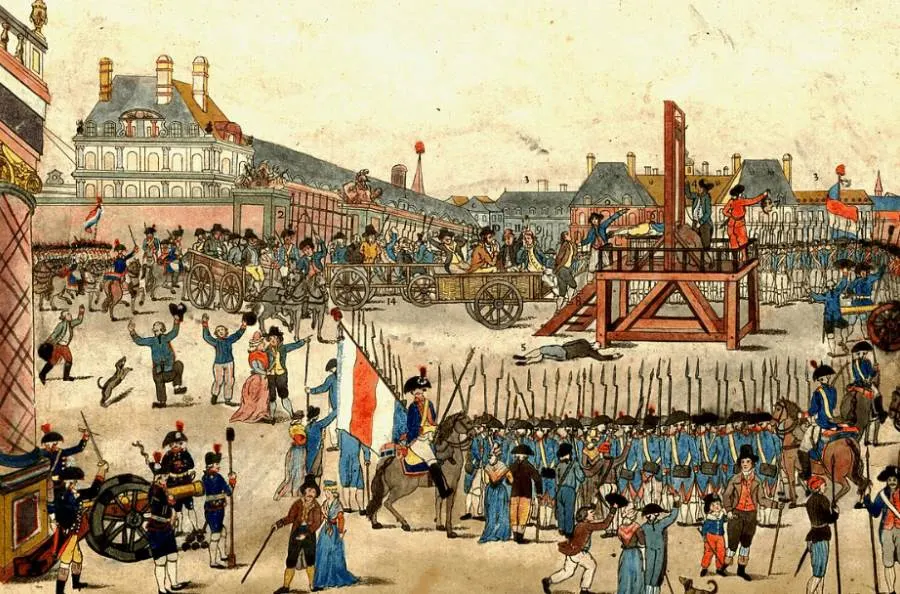
36. The French Directory was formed (1795-1799)
The Directory was the governing five-member committee in the French First Republic from November 2, 1795, until November 9, 1799.
It was in constant war with foreign entities and was stacking up serious debt, resulting in a continuous financial crisis. It did, however, stop the mass executions and was more lenient for exiled priests and royalists.
Historians have generally been very negative about the French Directory. The only way it was able to pay its expenses was to invade and plunder other countries. It was merely a government of self-interest rather than one that benefited the people who were still suffering.
37. The Final Coup d’État of 1799
One of the (indirect) initiators of the French Revolution, Emmanuel Joseph Sieyès who wrote the pamphlet regarding the third estate, was chosen as director. He felt that a change was needed for the French Directory to govern the country.
Together with successful general Napoleon Bonaparte, Sieyes began preparing another coup d’état. This one (which was one of many attempts) took place on 9–10 November 1799 (18–19 Brumaire VIII) and replaced the five directors now with three “consuls”: Napoleon, Sieyes, and Roger Ducos.
This event made Napoleon Bonaparte the first consul of France, changed the French Directory to the French Consulate, and effectively ended the French Revolution.
